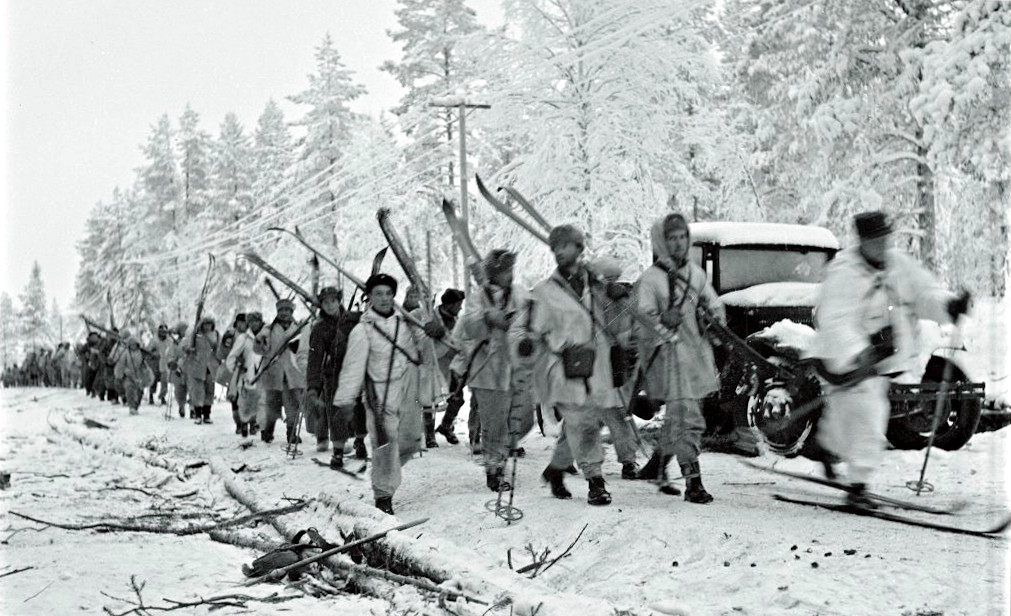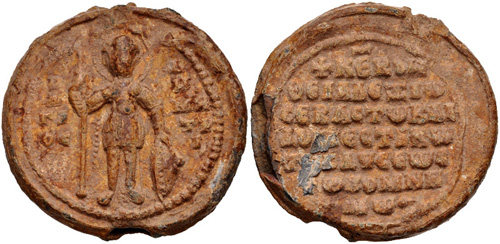|
Battle Of Dristra
The Battle of Dorostolon was fought in August 1087 between the forces of the Byzantine Empire, led by Emperor Alexios I Komnenos, and the Pechenegs who had settled in the former Byzantine province of Paradounabon, in what is now northern Bulgaria. After rejecting peace overtures from the Pechenegs, Alexios left Constantinople, crossed the Balkan Mountains, and reached the city of Dorostolon (modern Silistra), the capital of Paradounabon. After a brief siege, the city was taken, but the citadels continued to resist; fearing the imminent arrival of the main Pecheneg army, Alexios decided to withdraw, but the Pecheneg army caught up with the Byzantines. The ensuing battle was hard-fought and with heavy casualties on both sides. The battle hung in the balance until the arrival of more Pecheneg reinforcements to the battlefield, which caused a panic in the Byzantine ranks. Alexios tried to rally his men by personal example, but the morale and discipline of his army collapsed, and the ... [...More Info...] [...Related Items...] OR: [Wikipedia] [Google] [Baidu] [Amazon] |
Byzantine Empire
The Byzantine Empire, also known as the Eastern Roman Empire, was the continuation of the Roman Empire centred on Constantinople during late antiquity and the Middle Ages. Having survived History of the Roman Empire, the events that caused the fall of the Western Roman Empire in the 5th centuryAD, it endured until the fall of Constantinople to the Ottoman Empire in 1453. The term 'Byzantine Empire' was coined only after its demise; its citizens used the term 'Roman Empire' and called themselves 'Romans'. During the early centuries of the Roman Empire, the western provinces were Romanization (cultural), Latinised, but the eastern parts kept their Hellenistic culture. Constantine the Great, Constantine I () legalised Christianity and moved the capital to Constantinople. Theodosius I, Theodosius I () made Christianity the state religion and Greek gradually replaced Latin for official use. The empire adopted a defensive strategy and, throughout its remaining history, expe ... [...More Info...] [...Related Items...] OR: [Wikipedia] [Google] [Baidu] [Amazon] |
Battle Of Levounion
The Battle of Levounion was the first decisive Byzantine victory of the Komnenian restoration. On April 29, 1091, an invading force of Pechenegs was crushed by the combined forces of the Byzantine Empire under Alexios I Komnenos and his Cuman allies. Background On August 26, 1071, a Byzantine army under Romanos IV Diogenes was defeated by the Seljuk Turks at Manzikert in eastern Asia Minor. The defeat caused the emperor to be deposed and replaced by the ineffectual Michael VII Doukas, who refused to honour the treaty that had been signed by Romanos. In response, the Turks began to move into Anatolia in 1073, meeting no opposition. Chaos reigned as the empire's resources were squandered in a series of disastrous civil wars. Thousands of Turkoman tribesmen crossed the unguarded frontier and moved into Anatolia. By 1080, an area of had been lost by the empire. It is almost impossible to overestimate the significance of these events, as within less than a decade more than half of ... [...More Info...] [...Related Items...] OR: [Wikipedia] [Google] [Baidu] [Amazon] |
Battles Involving The Pechenegs
A battle is an occurrence of combat in warfare between opposing military units of any number or size. A war usually consists of multiple battles. In general, a battle is a military engagement that is well defined in duration, area, and force commitment. An engagement with only limited commitment between the forces and without decisive results is sometimes called a skirmish. The word "battle" can also be used infrequently to refer to an entire operational campaign, although this usage greatly diverges from its conventional or customary meaning. Generally, the word "battle" is used for such campaigns if referring to a protracted combat encounter in which either one or both of the combatants had the same methods, resources, and strategic objectives throughout the encounter. Some prominent examples of this would be the Battle of the Atlantic, Battle of Britain, and the Battle of France, all in World War II. Wars and military campaigns are guided by military strategy, whereas battl ... [...More Info...] [...Related Items...] OR: [Wikipedia] [Google] [Baidu] [Amazon] |
Conflicts In 1087
Conflict may refer to: Social sciences * Conflict (process), the general pattern of groups dealing with disparate ideas * Conflict continuum from cooperation (low intensity), to contest, to higher intensity (violence and war) * Conflict of interest, involvement in multiple interests which could possibly corrupt the motivation or decision-making * Cultural conflict, a type of conflict that occurs when different cultural values and beliefs clash * Ethnic conflict, a conflict between two or more contending ethnic groups * Group conflict, conflict between groups * Intragroup conflict, conflict within groups * Organizational conflict, discord caused by opposition of needs, values, and interests between people working together * Role conflict, incompatible demands placed upon a person such that compliance with both would be difficult * Social conflict, the struggle for agency or power in something * Work–family conflict, incompatible demands between the work and family roles of a ... [...More Info...] [...Related Items...] OR: [Wikipedia] [Google] [Baidu] [Amazon] |
Battles Of Alexios I Komnenos
A battle is an occurrence of combat in warfare between opposing military units of any number or size. A war usually consists of multiple battles. In general, a battle is a military engagement that is well defined in duration, area, and force commitment. An engagement with only limited commitment between the forces and without decisive results is sometimes called a skirmish. The word "battle" can also be used infrequently to refer to an entire operational campaign, although this usage greatly diverges from its conventional or customary meaning. Generally, the word "battle" is used for such campaigns if referring to a protracted combat encounter in which either one or both of the combatants had the same methods, resources, and strategic objectives throughout the encounter. Some prominent examples of this would be the Battle of the Atlantic, Battle of Britain, and the Battle of France, all in World War II. Wars and military campaigns are guided by military strategy, whereas batt ... [...More Info...] [...Related Items...] OR: [Wikipedia] [Google] [Baidu] [Amazon] |
1080s In The Byzantine Empire
1 (one, unit, unity) is a number, numeral, and glyph. It is the first and smallest positive integer of the infinite sequence of natural numbers. This fundamental property has led to its unique uses in other fields, ranging from science to sports, where it commonly denotes the first, leading, or top thing in a group. 1 is the unit of counting or measurement, a determiner for singular nouns, and a gender-neutral pronoun. Historically, the representation of 1 evolved from ancient Sumerian and Babylonian symbols to the modern Arabic numeral. In mathematics, 1 is the multiplicative identity, meaning that any number multiplied by 1 equals the same number. 1 is by convention not considered a prime number. In digital technology, 1 represents the "on" state in binary code, the foundation of computing. Philosophically, 1 symbolizes the ultimate reality or source of existence in various traditions. In mathematics The number 1 is the first natural number after 0. Each natural number, ... [...More Info...] [...Related Items...] OR: [Wikipedia] [Google] [Baidu] [Amazon] |
Cumans
The Cumans or Kumans were a Turkic people, Turkic nomadic people from Central Asia comprising the western branch of the Cumania, Cuman–Kipchak confederation who spoke the Cuman language. They are referred to as Polovtsians (''Polovtsy'') in Rus' chronicles, as "Cumans" in Western sources, and as "Kipchaks" in Eastern sources. Related to the Pecheneg, they inhabited a shifting area north of the Black Sea and along the Volga River known as Cumania, from which the Cuman–Kipchaks meddled in the politics of the Caucasus and the Khwarazmian Empire. The Cumans were fierce and formidable nomadic warriors of the Eurasian Steppe who exerted an enduring influence on the medieval Balkans. They were numerous, culturally sophisticated, and militarily powerful. Many eventually settled west of the Black Sea, influencing the politics of Kievan Rus', the Kingdom of Galicia–Volhynia, Galicia–Volhynia Principality, the Golden Horde Khanate, the Second Bulgarian Empire, the Kingdom of Serbia ... [...More Info...] [...Related Items...] OR: [Wikipedia] [Google] [Baidu] [Amazon] |
Alexios I Komnenos
Alexios I Komnenos (, – 15 August 1118), Latinization of names, Latinized as Alexius I Comnenus, was Byzantine Emperor, Byzantine emperor from 1081 to 1118. After usurper, usurping the throne, he was faced with a collapsing empire and constant warfare throughout his reign, Alexios was able to curb the Byzantine decline and begin the military, financial, and territorial recovery known as the Komnenian restoration. His appeals to Western Europe for help against the Seljuk Empire, Seljuk Turks were the catalyst that sparked the First Crusade. Although he was not the first emperor of the Komnenos, Komnenian dynasty, it was during his reign that the Komnenos family came to full power and initiated a hereditary succession to the throne. The son of John Komnenos (Domestic of the Schools), John Komnenos and a nephew of Isaac I Komnenos, Alexios served with distinction under three Byzantine emperors. In 1081, he led a rebellion against Emperor Nikephoros III Botaneiates and took ... [...More Info...] [...Related Items...] OR: [Wikipedia] [Google] [Baidu] [Amazon] |
Silistra
Silistra ( ; ; or ) is a town in Northeastern Bulgaria. The town lies on the southern bank of the lower Danube river, and is also the part of the Romanian border where it stops following the Danube. Silistra is the administrative center of the Silistra Province and one of the important towns of the historical region of Dobruja. Silistra is a major cultural, industrial, transportation, and educational center of Northeastern Bulgaria. There are many historical landmarks including a richly-decorated Late Roman tomb, remains of the medieval fortress, an Ottoman fort, and an art gallery. Etymology The name Silistra is possibly derived from the root of the old Thracian name of the lower part of the Danube " Istrum". The name of the city is given as ''Silistria'' in the ''Encyclopædia Britannica'' Eleventh Edition. Geography Silistra is in the northeastern part of Bulgaria on the southern bank of the Danube River. It is located in the Bulgarian part of Dobruja. The munici ... [...More Info...] [...Related Items...] OR: [Wikipedia] [Google] [Baidu] [Amazon] |
Balkan Mountains
The Balkan mountain range is located in the eastern part of the Balkan peninsula in Southeast Europe, Southeastern Europe. It is conventionally taken to begin at the peak of Vrashka Chuka on the border between Bulgaria and Serbia. It then runs for about , first in a south-easterly direction along the border, then eastward across Bulgaria, forming a natural barrier between the northern and southern halves of the country, before finally reaching the Black Sea at Cape Emine. The mountains reach their highest point with Botev Peak at . In much of the central and eastern sections, the summit forms the watershed between the drainage basins of the Black Sea and the Aegean Sea, Aegean. A prominent gap in the mountains is formed by the predominantly narrow Iskar Gorge, a few miles north of the Bulgarian capital, Sofia. The karst relief determines the large number of caves, including Magura Cave, Magura, featuring the most important and extended European post-Palaeolithic cave painting, Le ... [...More Info...] [...Related Items...] OR: [Wikipedia] [Google] [Baidu] [Amazon] |






